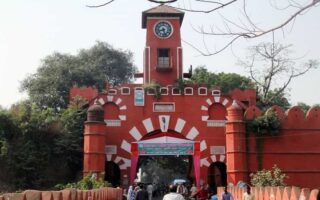Humans have always been interested in exploring things and places that connect us with the past times. Historians, archaeologists, researchers, philosophers, students, and all other sane people have found that the historical sites have many insights to offer to us. The debate on how these things and places came into existence and what purpose did they serve the people in the past goes on with the ongoing researches and studies conducted by experts. However, a common man who is possessed by the soul of a nomad is not worried regarding the what, how, why and when of these places. All he/she cares about is a place that is worth visiting and exploring it at least once in a lifetime. Humayun’s Tomb in Delhi is among such popular destinations that are frequented by tourists, researchers, students and other people who either want to spend their vacations or learn more about this site that has been in existence for centuries.
Location
Humayun’s Tomb was constructed in Delhi, which now serves as the capital of India. It is located at Bharat Scouts and Guides Marg, Off Mathura Road, Nizamuddin, New Delhi.
History
The site where the tomb is constructed is not exactly where Humayun was buried after he died in 1556. His body was first buried in the Purana Qila. After Hemu defeated the Mughal kingdom and took over the fort, his tomb was shifted to a city in Punjab. This step was taken in order to avoid any damage that Hemu could do to the tomb after becoming the ruler of the region.
The construction of the tomb commenced in 1565 on the instructions of Humayun’s widow, Hamida Banu Begum. The design of the tomb was created by a Persian architect named Mirak Mirza Ghiyath. Built out of red sandstone, a common element in several structures of that period, the tomb complex houses the graves of Hamida Begum and several Mughal emperors as well.
The tomb complex is built on the Yamuna river bank, close to the Nizamuddin Dargah, where Nizamuddin Auliya, a revered Sufi saint was buried.
Structure
The historical tomb stands tall at a height of 47 metres and measures 300 metres in width. The Persian architect brought with himself the Persoan architectural patterns and infused those with the Mughal architecture patterns, thus creating a combination that was praised by many historians and visitors.
The double dome is one of the distinguishing characteristics of the tomb, along with Charbagh, the Persian gardens that used to surround it and are spread over in 30 acres. Built with an intent to beautify the tomb, these gardens were later neglected due to the shift in the capital and the maintenance costs. During the eighteenth century, these gardens became farmland for villagers who cultivated vegetables here.
After the Britishers took over Delhi, they decided to change the structure of the gardens and give an English garden look to it.
There are several other tombs and monuments close to the Humayun’s tomb. These include:
Barber’s Tomb
Built in 1591 for a barber who served the royal family, there are no inscriptions or records that provide the name or details of the barber.
Bu Halima’s Tomb and Garden
Little information is available regarding this tomb, which is located towards the west entrance to the complex.
Tomb and Mosque of Isa Khan
Built around two decades before the construction of Humayun’s tomb, the tomb complex is of Isa Khan, who served in Sher Shah Suri’s court. His family members were also buried here.
Afsarwala Tomb and Mosque
Built in 1566-67, this tomb was built for an afsar (offier) who worked in Akbar’s court.
Arab Sarai
Arab Sarai or the Arab resthouse was built for craftsmen who were employed in the construction.
Nila Gumbad (Blude Dome)
The dome gets its name from the glazing blue tiles and was built for a servant working for a courtier in Akbar’s court.
What to See
The various monuments and gardens are open for the public. One can get a magnificent view of the gardens and the nearby area from the roof of the tomb. One can enjoy exploring the tomb complex and other monuments and then head to the gardens and rest in the shade of trees or play games with the companions.
Eat, Drink, Collect
There are a lot of restaurants and outlets located close to the Humayun’s Tomb. You can head to El Dorado Restaurant, Eatopia Restaurant, Travertino, Baci Bar, Concept Restaurant, Deez, Barbeque Nation, The All American Diner or any other outlet. There is an outlet for every mood and every budget; you just need to decide which would best suit you.
One can buy almost anything of his/her choice in the streets and malls of Delhi. There are some famous shopping destinations, including Chandni Chowk, Palika Bazaar, Connaught Place, Paharganj Market, etc. You must not forget your right to bargain against the prices quoted by the sellers.
Best Time to Visit
The tomb remains open from sunrise to sunset on all days. All you need to do is spare around two hours to explore the monuments and the garden.
The best time to visit Humayun’s Tomb is during the months of October to March. The temperature during this period makes it easy for the tourists to commute around the city in broad daylight.
Visitors from India, SAARC and BIMSTEC countries are required to pay an entrance fee of Rs 10/- per person. Visitors from other countries are charged US $5 or Rs 250/- per person towards admission.
How to Reach
To reach Humayun’s Tomb, you can find a number of public and private transportation options. The residents of Delhi largely rely on the local buses and metro trains that are available in plenty. The nearest railway station and metro station from the Humayun’s Tomb are the Hazrat Nizamuddin Railway Station and JNL Stadium Metro station.
